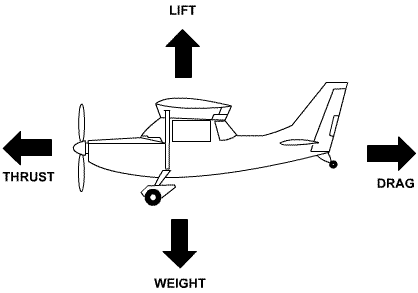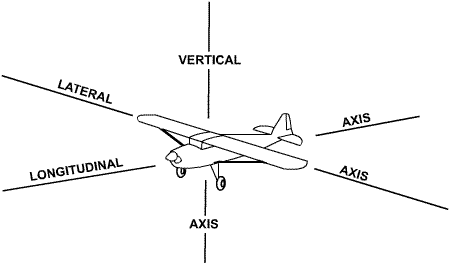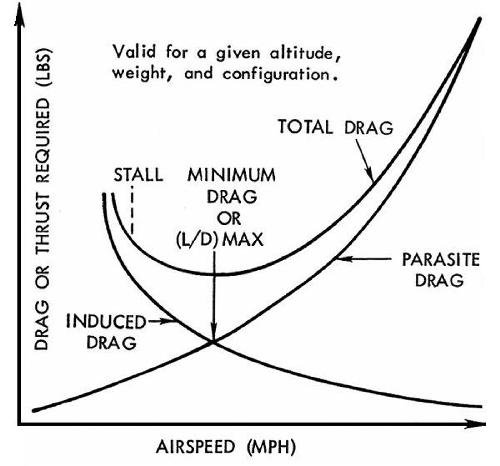Learn to Fly at North Las Vegas Airport
Beginner and High Performance Flight Instruction
L. Scott Brooksby, DDS, MEII, ATP
If you would like an introductory flight in our air conditioned Cherokee 235
for $200 call 702-274-6700 or email us at drscottbrooksby@gmail.com.
If you like our solutions click on the +1 button so other will know that you like this.
Four Forces
In unaccelerated level flight the force of lift is equal and opposite to weight, and the force of thrust is equal and opposite to drag.

Imbalance of the forces will cause a change in speed or altitude of the airplane. Lift produced by an airfoil is the net force developed perpendicular to the relative wind.
There are three reference axes around which an airplane rotates in flight, all of which intersect at the center of gravity, (CG). The vertical or yaw axis runs vertically through the CG. Motion around this axis is called yaw and is controlled by the rudder. The longitudinal or roll axis runs lengthwise through the fuselage from nose to tail. Motion around this axis is called roll and is controlled by the ailerons. The lateral or pitch axis extends horizontally through the airplane from wing tip to wing tip. Motion around this axis is called pitch and is controlled by the elevators. Each axis is perpendicular to each of the other two.

Trim tabs are provided to relieve control pressures in flight. The tabs are small airfoils located at the trailing edge of the associated control and moved, by the pilot, in the direction opposite to which the control is to be moved.
Drag is the rearward acting force which resists the forward
movement of the airplane through the air. It acts parallel
to and in the same direction as the relative wind. Total
drag is the sum of induced drag and parasite drag. 
Induced drag is produced when lift is produced and increases in direct proportion to increases in angle of attack. Since the angle of attack required to maintain lift equal to weight is greater at slow speeds, induced drag is also greater at slow speeds.
Parasite drag is air resistance produced by any part of the airplane that does not generate lift. Landing gear, radio antennas and steps are examples of components that produce parasite drag. Parasite drag increases as the airspeed increases. If the speed is doubled, parasite drag increases by a factor of four.
Best glide speed occurs at the point of minimum drag or L/D Max.
As the wing passes through the air, the air molecules on the top of the wing must go faster as they go over the curvature of the wing to keep up with the air molecules passing underneath the flatter bottom of the wing. Just as a runner running over a steeper hill at a faster speed would gasp for breath, the wing develops lower pressure. It is just like trying to suck the air into your lungs as you run faster. This suction, or low pressure, on top of the wing helps create lift according to Bernouli's principle. At the wing tip the higher pressure under the wing is sucked around the wing tip to the lower pressure on top of the wing. As this occurs some of the lift on top of the wing is destroyed resulting in more drag. Because the wing is moving forward as the air moves from the bottom of the wing to the top, it causes a spiraling of the air behind where the wing just was.
The greater the lift, the greater the size and intensity of the vortex. For this reason a Heavy airliner that has its flaps down generates stronger vortices. Watch the following video to see this in action.
As the wing get closer to the ground, a cushion of air forms beneath the wings that pushes the wing tip vortex to the side away from the wing. This effectively stops the vortex from destroying lift and increasing drag. The resultant reduction in drag and increase in lift causes the wing to float when close to the ground. This is called ground effect. It is more pronounced in a low wing aircraft than in a high wing aircraft because of how close the wing can get to the ground. As you watch the following video of a helicopter blade close to the ground passing through smoke, watch the vortex as it is pushed to the side. Remember that a propeller or helicopter blade is shaped just like a wing.
Because of the height of a wing above the ground, a high wing aircraft usually has a landing window of about 20 mph during which a nice landing can be made. As the wing gets closer to the ground and ground effect becomes stronger the airspeed must be more closely controlled. For this reason the hershey bar shaped wing of a Cherokee has a landing window of only about 10 mph. When the wing is tapered and is close to the ground like in a Mooney or a Comanche the landing window is only about 5 mph. For this reason pilots used to flying high wing Cessnas have a harder time transitioning to a Comanche or a Mooney. The result is that the insurance companies require more time with an instructor before the pilot is allowed to solo with one of these aircraft.
The pilots that learn to fly the low wing aircraft transition much more readily to the Comanche or the Mooney. For this reason, if you plan to fly a high performance low wing aircraft like a Comanche or Mooney, it may be worth your while to consider training in this type of aircraft. Pilots that learn to fly a low wing aircraft have no problem flying a high wing aircraft because they have already learned how to better control their airspeed.